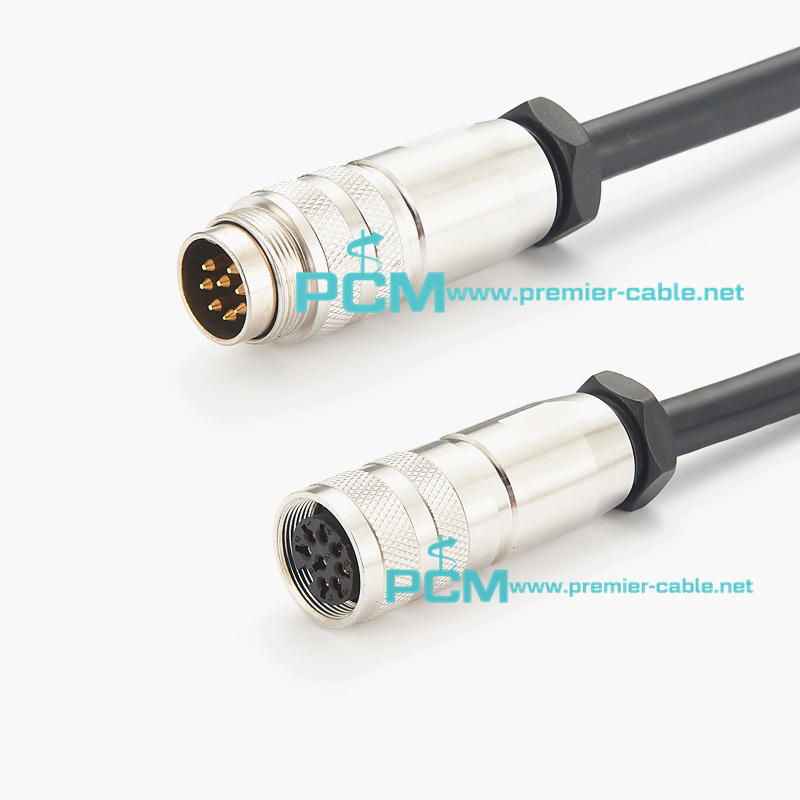 Esperanto
Esperanto
 Shqiptare
Shqiptare
 Euskara
Euskara
 Zulu
Zulu
 Latinus
Latinus
 Cymraeg
Cymraeg
 தமிழ்
தமிழ்
 Slovak
Slovak
 Slovak
Slovak
 Afrikaans
Afrikaans
News Center
What is a base station ?
Publish:
2022-06-13 16:19
Source:
www.premier-cable.net
What is a base station ?
What is a base station ? Understand what a base station does
The construction of mobile communication base stations is an important part of the investment of China Mobile communication operators. The construction of mobile communication base stations is generally carried out around such factors as coverage, call quality, investment efficiency, ease of construction, and ease of maintenance.
With the development of mobile communication network services in the direction of dataization and packetization, the development trend of mobile communication base stations must also be broadband, large-coverage construction and IP-based.
A base station, that is, a public mobile communication base station, is a form of radio station, which refers to a radio transceiver station that transmits information with mobile phone terminals through a mobile communication switching center in a certain radio coverage area.
Open the door of the main equipment cabinet of the base station, and see that there are several racks, the bottom one is the Cisco switch (connected to the backhaul fiber connection equipment), the top rack is the LTE equipment, processing LTE data services; the middle two racks The box is a CDMA device that handles CDMA data traffic and voice traffic.
There are many main equipment manufacturers, such as Huawei, ZTE, Ericsson, NSN, etc. The appearance of the equipment of different equipment manufacturers is different, but the working principle is the same, and they are all designed according to the unified protocol standard. The main unit in the picture above is the Samsung Smart Multi-modal Base Stations (SMM-2LD000).
Base station antenna
The base station signal is sent and received through the antenna. The above picture is the antenna of the base station. Usually, a base station has 3 directional antennas, each antenna covers a sector area of 120 degrees. The two small boxes next to the antenna in the picture above are RF amplifiers, which are used to amplify the base station signal.
RF amplifier
Feeder connection at the base station
These are the power supply parts of the base station. The power supply of the base station is introduced through alternating current, and then converted to -48V direct current power through the switching power supply to supply power for communication equipment.
The selection of a base station needs to be comprehensively considered in terms of performance, supporting, compatibility and use requirements. Special attention is paid to the fact that the base station equipment must be compatible or matched with the mobile switching center, so as to achieve better communication results.
The base station subsystem mainly includes two types of equipment: base transceiver station BTS and base station controller BSC
The main function of the base station is to provide wireless coverage, that is, to realize the wireless signal transmission between the wired communication network and the wireless terminal.
How base station antenna works
1. The control signaling, voice call or data service information on the core network side is sent to the base station through the transmission network. In 2G and 3G networks, the signal is first transmitted to the base station controller, and then to the base station
2. The signal is processed by baseband and radio frequency on the base station side, and then sent to the antenna through the radio frequency feeder for transmission.
3. The terminal receives the radio waves transmitted by the antenna through the wireless channel, and then demodulates its own signal.
communication base station
Communication base station generally refers to the base station
A base station is a public mobile communication base station, which is an interface device for mobile devices to access the Internet, and is also a form of radio station. Passed radio transceiver station. The construction of mobile communication base stations is an important part of the investment of mobile communication operators. The construction of mobile communication base stations is generally carried out around such elements as coverage, call quality, investment benefit, ease of construction, and ease of maintenance. With the development of mobile communication network services in the direction of dataization and packetization, the development trend of mobile communication base stations must also be broadband, large-coverage construction and IP-based.
A base station, that is, a public mobile communication base station, is a form of radio station, which refers to a radio transceiver station that transmits information with mobile phone terminals through a mobile communication switching center in a certain radio coverage area. Simply put, the base station is used to ensure that our mobile phone can maintain a signal anytime and anywhere during the process of moving, which can ensure the needs of calling and sending and receiving information. The equipment with mobile signs on the sharp and high iron towers we see in our daily life is the base station. The base station transmits and receives messages through the antenna.
The communication base station is the most critical infrastructure in the mobile communication network. Mobile communication base station machine room, electric wire, tower mast and other structural components, among which the base station room is mainly equipped with signal transceiver, monitoring device, fire extinguishing device, power supply equipment and air conditioning equipment, and tower pole including lightning protection grounding system, tower body, foundation, bracket , cables and auxiliary facilities and other parts of the structure. According to the shape, tower masts can be divided into angle steel towers, single-tube towers, jacks, cable towers and other different forms. The antenna is a three-layer structure of antenna frame, feeding system and wireless reflector, and has two different application scenarios, indoor and outdoor. According to different transmission directions, the antenna can also be divided into directional and omnidirectional.
5G base station equipment system
From the perspective of equipment architecture, 5G base stations can be divided into different architectures such as BBU-AAU, CU-DU-AAU, BBU-RRU-Antenna, CU-DU-RRU-Antenna, and integrated gNB. In the BBU-AAU architecture, the baseband unit is mapped to a separate physical device BBU, and the AAU integrates the radio frequency unit and the antenna unit. If the eCPRI interface is used, the AAU also includes some underlying processing functions of the physical layer. In the CU-DU-AAU architecture, baseband functions are distributed to two physical devices, CU and DU, which together form a 5G baseband unit. The F1 interface between CU and DU is the mid-transmission interface. [4] In the BBURRU-Antenna architecture, the function of the RRU is the same as that of the AAU. The difference is that the RRU has no built-in antenna unit and needs an external antenna. It is mainly used in low-capacity requirements such as suburban or indoor coverage scenarios. The integrated gNB architecture integrates 5G baseband units, radio frequency units, and antenna units. It is a highly integrated and compact device, and can be used in special scenarios such as local area coverage or indoor coverage. [4]
From the perspective of equipment form, 5G base stations can be divided into baseband equipment, radio frequency equipment, integrated gNB equipment and other forms of equipment. Among them, 5G baseband equipment includes different types of physical equipment such as BBU, CU, and DU, and 5G radio frequency equipment includes AAU and RRU equipment.
Antenna Measurement Technology
Most LTE 4G antennas are passive antenna arrays, and RF analog phase shifting is often used to adjust the downtilt angle of the antenna. The 5G Massive MIMO antenna is an active antenna that integrates the transceiver channel and the antenna array, and the amplitude and phase distribution of the antenna unit is completed by the digital baseband part. The test methods and indicators of the original passive antenna cannot meet the needs of 5G antennas. 5G antennas need to introduce some new test indicators to reflect the design advantages and disadvantages of active antenna systems.


Related News
What is a terminal block used for?
While there are many factors to consider when designing an overall system, terminal blocks are an optimal solution for complex electrical system connections. With a variety of color options and configurations, Premier Cable’ terminal blocks offer a range of options to meet your design challenges.
CAN-bus has been widely used in various automation control systems. For example, CAN-bus has incomparable advantages in various fields such as automotive electronics, automatic control, smart buildings, power systems, and security monitoring.
Introduction to M12 connector pin coding
M12 encoding types are A encoding, B encoding, D encoding and X encoding. A-code, B-code and X-code are some of the earliest developed and longest-available M12 connectors. The latest M12 coding types currently under development are K coding for AC and L coding for PROFINET DC.
Cables – What are the correct cable sizes for an NMEA 2000 network?
The three different sizes of NMEA 2000 certified DeviceNet standard cabling are "micro," "mid," and "mini."
What are the advantages of NMEA 2000?
The Premier Cable Starter Kits provide everything you need to get to create a basic NMEA 2000 network from scratch.
The role of DeviceNet terminal resistor
DeviceNet_network is a fieldbus network protocol based on Controller Area Network (CAN). In the DeviceNet network, the terminal resistor plays the role of compensation and protection for signal transmission. The function of the terminal resistor is to eliminate signal reflection and interference and ensure the signal transmission quality.
